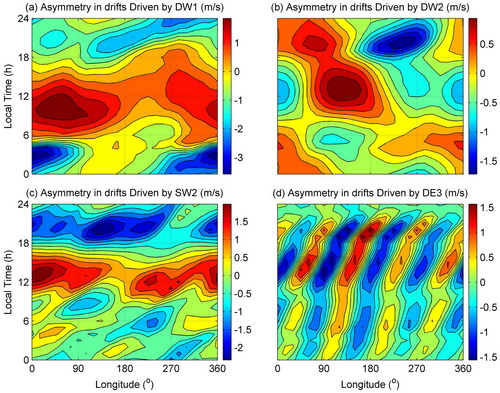Vice Professor REN Zhipeng and his teacher WAN Weixing simulate the influence of the lower thermospheric tidal winds below 105 km on asymmetry in the ionospheric vertical plasma drifts (V⊥) and examine the influences of different tide components.
The asymmetry in daytime V⊥varies with local time and longitude and mainly shows three features. First, the simulated daytime V⊥ during the March equinox is larger than that during the September equinox in most of longitudinal sectors. This asymmetry is mainly driven by the semiannual oscillation (SAO) of the migrating diurnal tide in the tropical mesosphere-lower thermosphere (MLT) region, and the equinoctial asymmetry of the migrating semidiurnal tide also plays an important role in the generation of this asymmetry. Second, the daytime V⊥ asymmetry in the Eastern Hemisphere is more significant than that in the Western Hemisphere.
Their simulation suggests that the longitudinal variations of the geomagnetic fields and the westward propagating diurnal (DW2) tides play important roles in the generation of this hemisphere difference. Third, there is an obvious wave number 4 longitudinal structure in the V⊥asymmetry.

Figure 1. The local time and longitudinal variations of the V⊥ asymmetry (VMarch- VSeptember) at the height of 600 km driven by (a) DW1, (b) DW2, (c) SW2, and (d) DE3 tides. (Image by REN)
Ren et al. Simulated equinoctial asymmetry of the ionospheric vertical plasma drifts. Journal of Geophysical Research. 2012, 117(A1), A01301, doi:10.1029/2011JA016952 (Download Here)